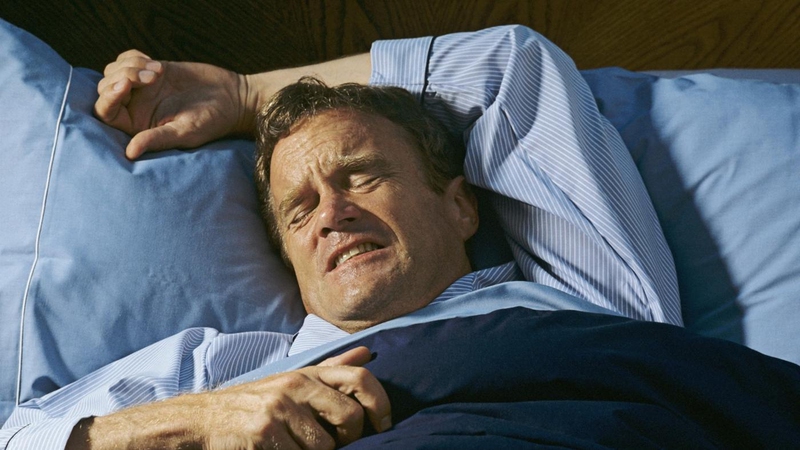Myoclonus refers to any involuntary jerking movement in your body. It may manifest itself in the form of hiccups, sleep starts, and common sudden jerks of your body. If you have these types of myoclonus, you don't need to worry about anything because these are perfectly normal and all healthy people experience them to some extent. It is, however, important to go see your doctor if you think your muscle twitch or jerk has become more persistent. Keep reading to learn more about specific symptoms of myoclonus and learn when it really makes sense to go visit your doctor.

Part 1: What Is Myoclonus?
It is worth pointing out that a myoclonic jerk is actually a symptom, not a disease. It refers to involuntary twitching or jerking of one or more of your muscles. You experience this due to sudden muscle contractions, which are called positive myoclonus – they can, however, be negative myoclonus caused mainly by muscle relaxation. These jerks or twitches may occur alone or have a particular sequence or pattern. A myoclonic jerk or a muscle twitch may occur without a reason or it may manifest itself due to an external event. In any case, it is not possible to control the twitching.
There are two simple forms of myoclonus. A hiccup is a great example of myoclonus muscle twitch followed by relaxation. Sleep starts are another type of myoclonus you usually experience when you're about to fall asleep. These simple forms of myoclonus cause no issues at all, but it sometimes becomes serious when it travels from one region of your body to another and even distorts movement, which in turn will limit your ability to talk, eat, or walk. These types of myoclonus are usually the outcome of an underlying brain disorder.
Part 2: Symptoms and Common Types of Myoclonus
Symptoms of Myoclonus
The most common symptoms of myoclonus are simple shakes, jerks, and spasms in your body, which could be brief, sudden, shock-like, involuntary, localized to all over the body or only part of your body, and variable in frequency and intensity. Sometimes, these spasm and jerking movements are severe enough to interfere with your speaking, eating, and walking abilities, which is usually the time you need to go discuss it all with your doctor to find a treatment plan.
Common Types of Myoclonus
You can divide myoclonus in many different types. Below are 4 most common of them all are mentioned below:
Essential myoclonus is the most common jerking movement that doesn't involve any underlying disorder. It usually remains stable over time.
Opsoclonus myoclonus, which is also referred to as dancing eyes-dancing feet syndrome, is a neurological condition in which you will experience brief, sudden and rapid muscle spasms with irregular eye movements. Children with tumors are more susceptible to developing this condition. People with this type of myoclonus will have other symptoms as well, such as irritability, poor muscle tone, and lethargy.
Action myoclonus is the type that hits you when you try to move suddenly. This type of myoclonus can be quite debilitating because myoclonus spasms often affect your legs, arms, voice, and face as well.
Stimulus sensitive myoclonus is another type triggered usually by outside stimuli, such as lights, noise, or movement.
Part 3: What Causes Myoclonus?
Why you need to deal with myoclonus is still not clear, but that usually happens when your brain sends an abnormal impulse to your muscles. The impulse originates from the central nervous system, such as the brainstem, the brain's cortex, or nerves. A damaged peripheral nerve may also cause myoclonus twitches and spasms.
Some underlying conditions and disorders may also cause myoclonus. Some of the most common culprits are brain tumors, epilepsy, genetic disorders, nervous system disorders, chemical poisoning, hypoxia, spinal cord injuries, and kidney failure.
Part 4: How Can You Deal With Myoclonus?
Take Medications
You can use tranquilizers, such as Clonazepam, to treat myoclonus symptoms. It may produce some side effects though – the most common side effects are drowsiness and dizziness. Similarly, you can use anticonvulsants, which are the drugs used to treat epileptic seizures. The most common options are Depakene, KEppra, and Mysoline. These drugs may cause side effects such as nausea, dizziness, and fatigue.
Try Therapies
You can opt for a therapy to help treat your symptoms. Taking Botox (OnabotulinumtoxinA) injections is one of the simplest and most effective options here. It helps treat different forms of myoclonus and is more effective when you want to treat a single area. These injections contain Botulinum toxins that prevent the production of a chemical messenger that makes your muscles contract.
Turn to Surgery
You may have to go for a surgical procedure when other treatment options don't produce desired results. A surgery is usually the option when a lesion in your spinal cord or brain causes your symptoms – a surgery is also need when a tumor is causing myoclonus symptoms.
Do Some Lifestyle Changes
Making some behavioral changes will also help take control of things and make your symptoms more manageable. For instance, a lack of sleep may make your symptoms worse, so it is a good idea to take at least 8 hours of sleep every night. People who have photosensitivity seizures can make things manageable by avoiding exposure to flickering lights.

View All Comments /Add Comment